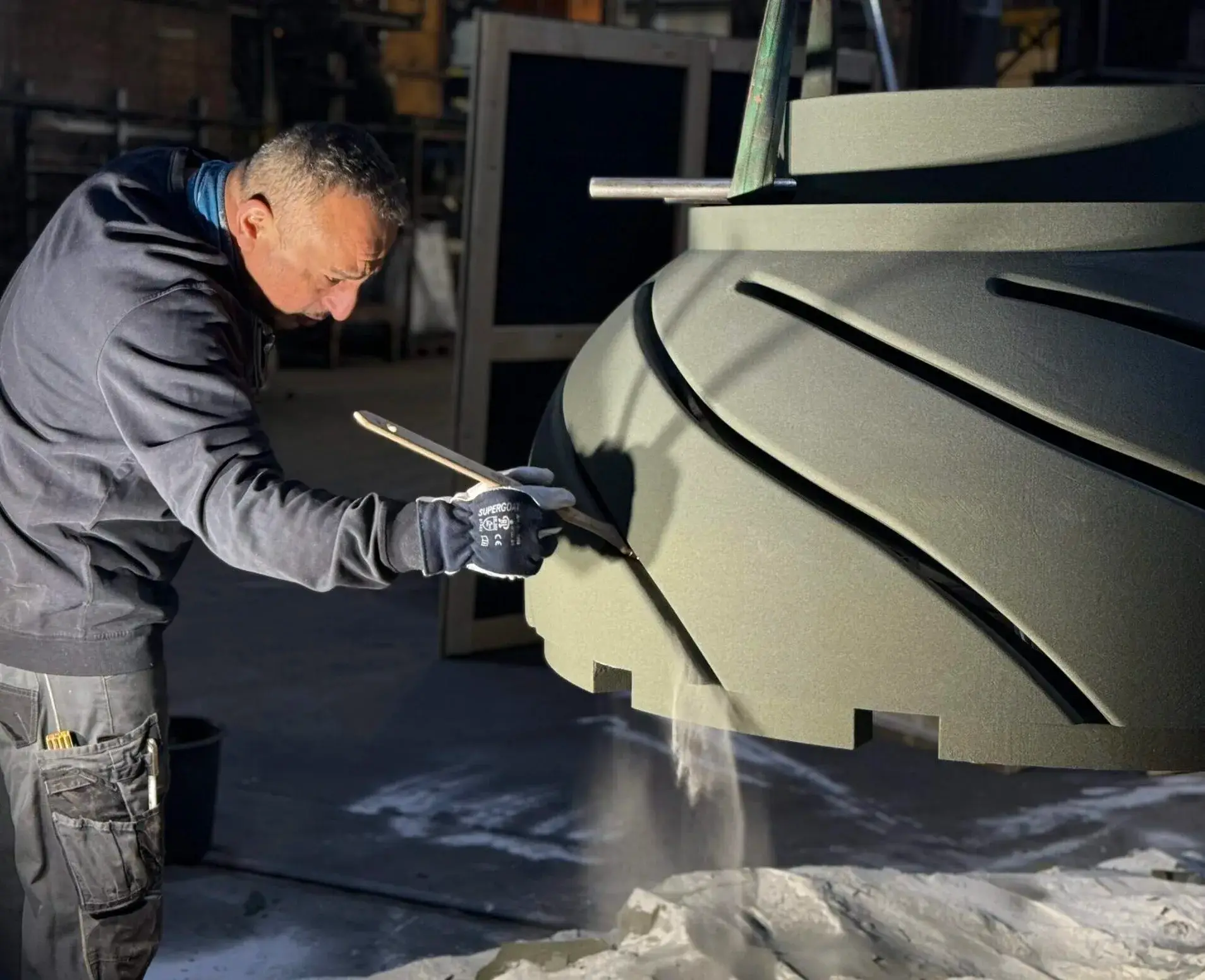
“The pump weighs over 10 tons and measures six meters in length. The guide vane housing is the largest cast part and has a rather complicated inner workings. Fifty years ago, highly complex sand molds with elaborate cores were used to manufacture the original part. Repeating this process today would not be economical for a single spare part. The complexity would be expensive for the customer and would mean a months-long model construction phase. With 3D sand printing, we can print the mold directly without adding complexity.” The sheer size of the guide vane housing nevertheless presented the team with challenges. There were two problems to overcome: Firstly, although the 3D sand printer doesn’t need a wooden model to create the casting mold, it can’t do without everything. The print file needs 3D data for the component. However, there were not even any drawings available.
 Denis Germann from GVT explains: “To reconstruct drawings of the spare part, we work together with the measurement specialists from Sigma 3D. They also measure very large parts on site, using mobile 3D scanners and sophisticated software. This enabled us to send the 3D data directly to the CASTFAST team.”
Denis Germann from GVT explains: “To reconstruct drawings of the spare part, we work together with the measurement specialists from Sigma 3D. They also measure very large parts on site, using mobile 3D scanners and sophisticated software. This enabled us to send the 3D data directly to the CASTFAST team.”
“Having to manufacture very old pump parts from scratch using reverse engineering – that doesn’t happen very often. We can usually still obtain them from the original manufacturer. If that’s not possible, the CASTFAST team’s 3D sand printing now provides us with a method that makes the process a lot easier for us. And the next time we need that specific spare part, we can order it at the touch of a button.”
© 2025 All Rights Reserved.